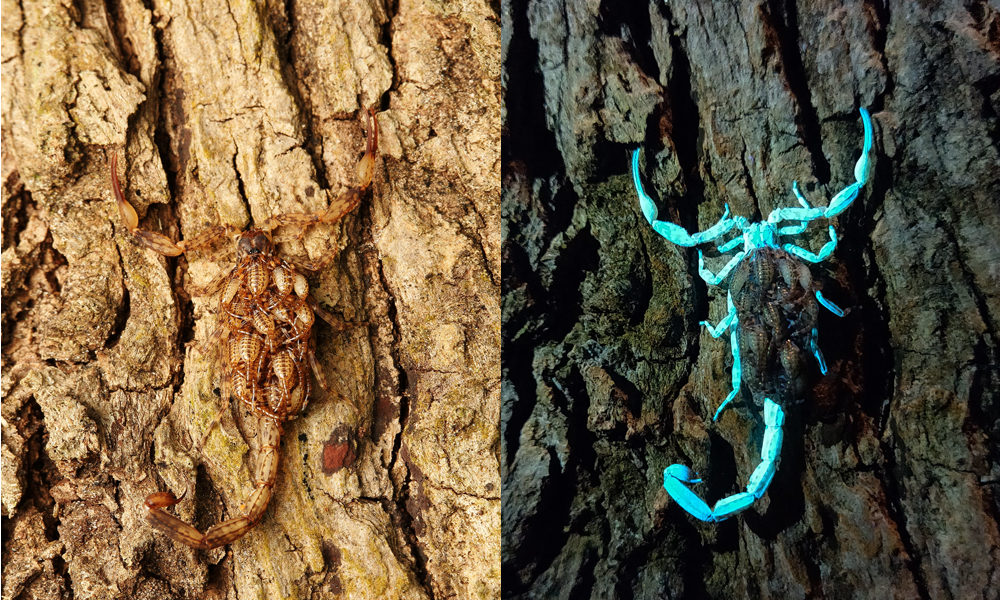
Three decades after I first saw a scorpion carrying a cluster of young on its back, I had a chance to photograph this spectacle recently. Walking in the dark within the Dubare Jungle Lodges campus armed with a camera and a torch, I started looking for the creatures of the night.
After spotting some bicoloured frogs, spiders, and geckos, I saw a scorpion on the trunk of a tree. Upon closer observation, I realised that it had babies on its back. After shooting a few pictures by regular torchlight, I decided to activate its UV light. The result was this picture, shot with my phone’s camera.
A scorpion’s exoskeleton has an outer layer called the cuticle, which contains a thin ‘hyaline layer’ that reacts to UV light. This is why scorpions glow in the dark when struck by moonlight or other UV light sources. Presumably, soft-skinned babies have not yet formed a cuticle and therefore don’t react in the same way. That’s the chemistry of the fluorescence. As for evolutionarily reasons, scientists are still working on that.

 CI is a non-profit, non-commercial portal that aims to facilitate wildlife and nature conservation by providing reliable information and the tools needed to campaign effectively.
CI is a non-profit, non-commercial portal that aims to facilitate wildlife and nature conservation by providing reliable information and the tools needed to campaign effectively.



Chosen as 'Picture of the Week'
A scorpion’s exoskeleton has an outer layer called the cuticle, which contains a thin ‘hyaline layer’ that reacts to UV light. This is why scorpions glow in the dark when struck by moonlight or other UV light sources.